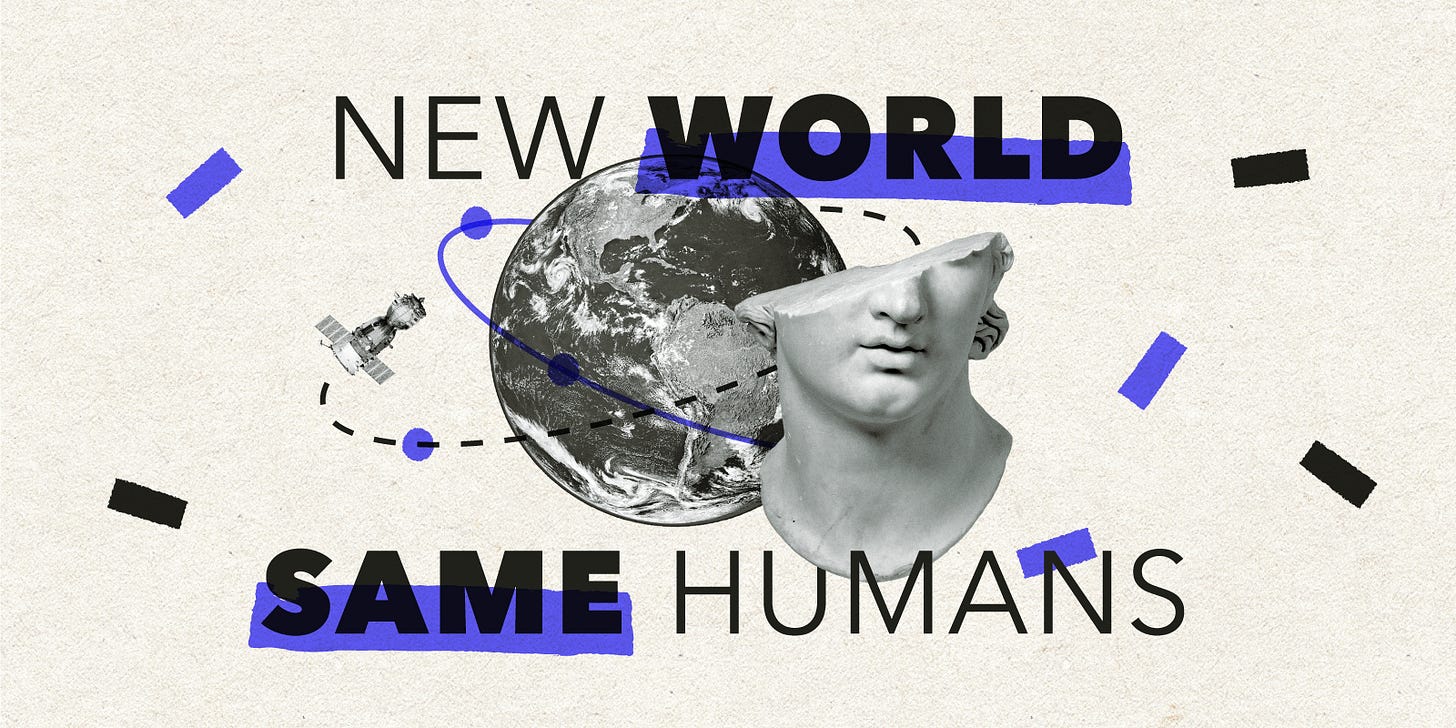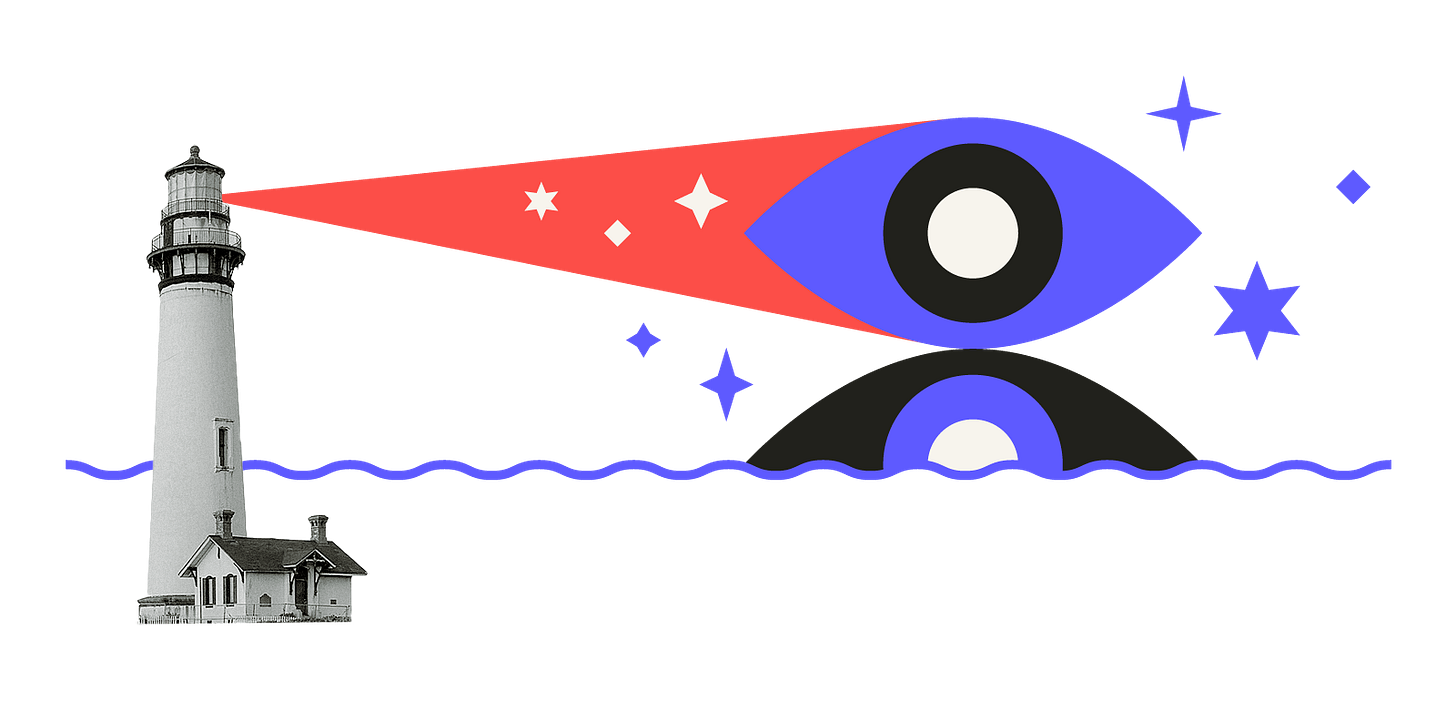Welcome to New World Same Humans, a weekly newsletter on trends, technology, and society by David Mattin.
If you’re reading this and you haven’t yet subscribed, join 18,000+ curious souls on a mission to build a better shared future 🚀🔮
🎧 If you’d prefer to listen to this week’s instalment, go here for the audio version of All Life is Here. 🎧
I’ve been thinking a lot, across the last few days, about trend and foresight methods. That’s thanks to a new project that I’m hugely excited about; I’ll be able to say more soon!
But this week, a quick and early note on the direction my thinking is heading in.
This note lays foundations I’ll build on in the coming months. At its heart is a single idea: that we must revolutionise the foresight industry in this decade.
So much of my work, including this newsletter, orbits around a simple framework. It’s about the collision between a changing world – including new technologies – and fundamental human needs and values. I’ve said it now a million different ways: new world, same humans.
Our fundamental, shared nature doesn’t change. But when it’s brought into contact with a changing world, new human behaviours and mindsets emerge. What’s more, if we can see them emerging we can serve them, by making new products, services, and experiences.
That’s a powerful foresight framework. There’s a lot to be said for making things that people want.
But there’s also a problem with all this. Across the last 100 years or so, we’ve walked a long way down the path of I want. Now, that phrase echoes through every part of the advanced consumer societies that we inhabit: I want, I want, I want. And we all know the consequences. The path we’ve travelled has led us to societies injured by inequalities, disinformation, and nihilism. And to an existential environmental crisis.
We need a new way.
It seems to me, then, that the framework I’m talking about needs to be augmented. We need, now, a model that looks beyond individual people and a narrow understanding of their changing wants. Instead, we should see those people as they are: inextricably embedded in systems, both social and planetary.
Design thinkers have already started to address this challenge. Last year in their Trends 2020 report, the iconic design agency Fjord talked about the need to move from human-centred design, which privileges the individual user, to life-centred design, which take a holistic view of people as inhabitants of social and environmental ecosystems. Design, in other words, that takes into account the lives of all of us, and non-human forms of life, too.
In these terms, then, I’m searching for a life-centred foresight. The terms, and the search, are new; we may find better names. But what really matters here is the challenge that all this – that life-centred design – poses to the foresight industry.
In the decade ahead, if the industry is to evolve in any meaningful sense – and if it’s to help solve so many of the problems it claims to be interested in – then this is the revolution we need. The industry likes to trade on an image of creative rebellion: let’s think outside the box, guys. In reality, its outputs are often intended to support a damaging and exhausted corporate status quo. If the foresight industry wants to help lead us to a radically different future, then it must first transform itself.
Of course, this is easier to talk about than it is to enact. How can it be done?
No one has clear answers yet; certainly not me. In the end, this is about the creation of new frameworks, models, and methods that allow us to analyse the complex social and planetary systems that humans are embedded in.
We might start by modelling not only people, but also the oceans, rainforests, and atmosphere as agents with their own needs and values. We recognise the legal personhood of corporations; why not do the same for ecosystems?
Meanwhile, we must think more deeply about the dark impulses that are also part of our shared nature, but that tend to be ignored by foresight and innovation methods. Such as those towards power, deception, self-aggrandisement, and chaos. Silicon Valley tech utopians told us that if we simply connected the world, everything would get better. As it turned out, some people had other ideas.
We must find new ways to model and analyse the unintended consequences of the products and services that our foresight helps corporations to build.
In all this, complexity is the key challenge. The social and ecological systems that we live inside are endlessly interconnected and unpredictable. That’s part of the reason that simulations, which can model this complexity, will become an ever-more important tool in the hands of foresight practitioners.
That, in short, is the challenge. We must move away from foresight that tends to privilege a narrow, atomised view of people and the I want that resounds so deafeningly across the consumer society. Intead, we should move towards new models that situate people inside the social and environmental networks that help make them who they are.
I’ll be writing much more about this soon. In the meantime, if you want to think aloud on this subject then join me inside the NWSH Slack group this week.
Humans of Earth
Thanks for reading!
If this instalment resonated with you, then stay tuned for news of a NWSH project that will empower you to dive much deeper into trend and foresight methods.
And now you’ve reached the end of this week’s instalment, why not take a second to forward this email to one person – a friend, family member or colleague – who’d also find it valuable? Or share New World Same Humans across one of your social networks, and let people know why it’s worth their time. Just hit the share button!
I’ll be back as usual on Wednesday; until then, be well.
David.






Very well said, David!